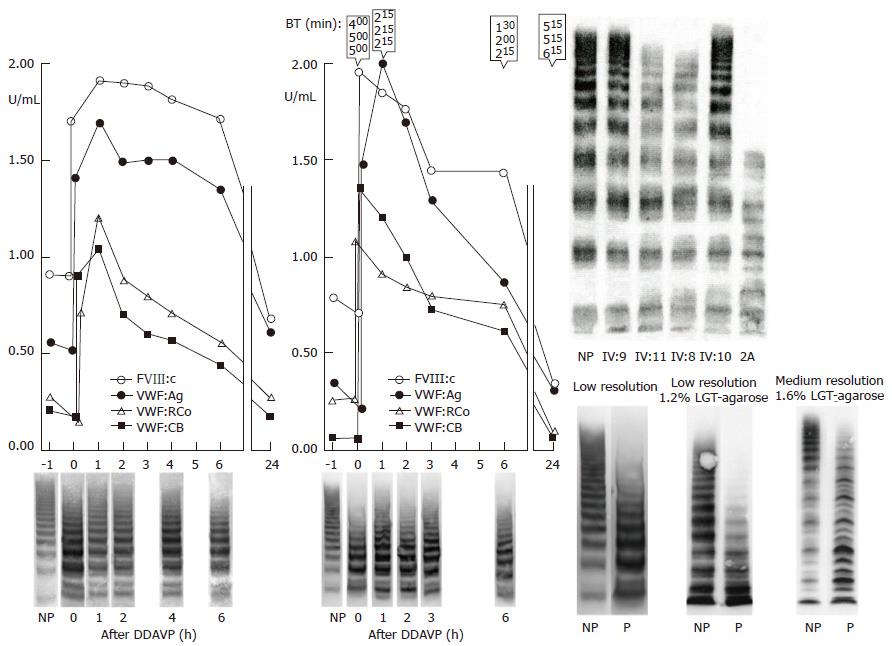Copyright
©The Author(s) 2016.
Figure 11 Dominant von Willebrand disease type 2A mutation V1499E is featured by a normal ristocetin-induced platelet aggregation assay.
The loss of largest VWF multimers and increase of intermediate and small VWF multimers in low resolution gels (VWF multimeric pattern before DDAVP, lower left)[43,44]. The responses to DDAVP of FVIII:C and von Willebrand factor antigen (VWF:Ag) are normal. The responses to DDAVP of the functional VWF:RCF and VWF:CB are restricted to about 1 U/mL 1 h post-DDAVP with transient correction of Ivy bleeding times and transient reappearance of large VWF multimers in two cases of moderate dominant VWD type 2A (mutation V1499E). As compared to VWF:Ag and FVIII:C, the half life times of VWF:RCo and VWF:CB are shortened due to increased proteolysis of VWF multimers (Left). Lower right: Please note that the VWF multimers in low resolution gels in the Rotterdam laboratory and in the Hamburg Laboratory (Budde, middle lanes) clearly show the absence of large VWF multimers and no triplet of the individual VWF bands. The typical triplet structure of the individual VWF bands diagnostic for VWD type 2A was only seen in the medium resolution gels (right lanes) according to Budde. Upper right: The multimeric analysis of VWF from affected patients from the large Dutch family with dominant V1499E mutated VWD 2A in a third laboratory (Amsterdam)[43] show the loss of the largest VWF multimers as shown for 2 affected cases (IV:8 and IV:11) as compared to normal (NP) and 2 non-affected family members (IV:9 and IV:10). The loss of large multimers in V1499E mutated VWD patients was less pronounced as compared to a case of typical VWD 2A with the loss of large and some of the intermediate VWF multimers and a typical triplet structure of each VWF band in that laboratory[43]. VWD: Von Willebrand disease; VWF: Von Willebrand factor; DDAVP: Desmopressin; NP: Normal plasma; P: Patient.
- Citation: Michiels JJ, Batorova A, Prigancova T, Smejkal P, Penka M, Vangenechten I, Gadisseur A. Changing insights in the diagnosis and classification of autosomal recessive and dominant von Willebrand diseases 1980-2015. World J Hematol 2016; 5(3): 61-74
- URL: https://www.wjgnet.com/2218-6204/full/v5/i3/61.htm
- DOI: https://dx.doi.org/10.5315/wjh.v5.i3.61









